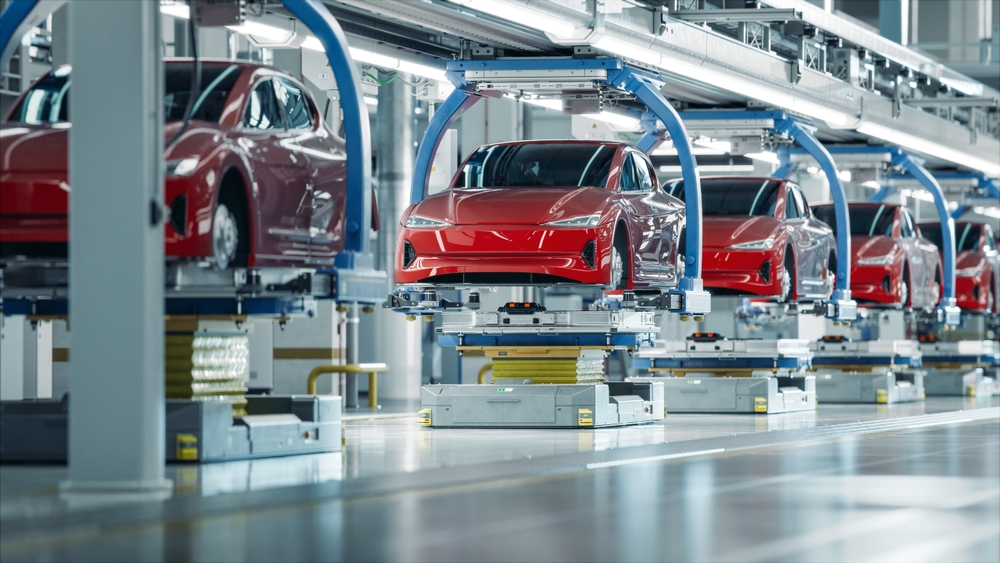
If you’ve recently shopped for a car, you’ve probably felt the sticker shock. Prices for new and used vehicles are climbing again, and it’s not just about demand. The real driver? A fragile supply chain that’s still reeling from pandemic-era disruptions. From aluminum shortages to semiconductor delays, manufacturers are struggling to keep production on track. And when supply shrinks while demand holds steady, prices inevitably rise.
Aluminum & Semiconductor Shortages Are Halting Production
Aluminum is a critical material in modern car manufacturing. In 2025, a shortage of aluminum has forced Jeep and Ford to pause production at key plants. This disruption means fewer SUVs and trucks rolling off the line, tightening inventory across dealerships. With fewer vehicles available, automakers are less likely to offer discounts or incentives. Consumers end up paying more for less selection.
Also, remember the chip shortage that started in 2020? It’s still haunting the auto industry today. Semiconductors power everything from infotainment systems to safety features, and without them, production slows dramatically. Trade tensions with China have made sourcing these chips even harder in 2025. Until supply stabilizes, expect delays and elevated prices on tech-heavy models.
Used car shoppers aren’t catching a break either. Years of disrupted new-car sales have created a ripple effect in the used market. Fewer lease returns and trade-ins mean fewer quality used vehicles available. As inventory shrinks, prices climb, especially for near-new models. It’s a classic supply-and-demand squeeze that’s hitting budget-conscious buyers hardest.
Tariffs Are Adding Fuel to the Fire
New tariffs on auto parts from Canada and Mexico are pushing costs higher. These trade policies, reintroduced in early 2025, have increased the price of imported components. Automakers are passing those costs directly to consumers. Even domestically assembled vehicles rely on foreign parts, so no one escapes the impact.
Even when cars are built, getting them to dealerships is another challenge. Shipping delays, driver shortages, and port congestion are slowing the flow of vehicles. This means longer wait times for buyers and fewer cars on the lot. Dealers with limited inventory often raise prices to maximize profit. The result? A frustrating and expensive buying experience.
Consumer Demand Remains Strong
Despite higher prices, demand for vehicles hasn’t dropped significantly. Many buyers delayed purchases during the pandemic and are now returning to the market. This pent-up demand is colliding with limited supply, creating fierce competition. Some buyers are even paying above MSRP just to secure a vehicle. Until supply catches up, this imbalance will keep prices elevated.
To cope with supply constraints, manufacturers are focusing on their most profitable vehicles. That means fewer budget-friendly models and more luxury trims hitting the market. While this strategy helps automakers stay afloat, it leaves cost-conscious buyers with fewer options. Entry-level cars are becoming harder to find, and when they do appear, they’re priced higher than expected. It’s a shift that’s reshaping the auto landscape.
Dealerships Are Adjusting Their Strategies
Dealers are adapting to the new normal by changing how they price and promote vehicles. With fewer cars to sell, they’re leaning into digital marketing and pre-orders. Some are bundling accessories or services to boost margins. Others are focusing on financing and extended warranties to make up for lost volume. These tactics may help dealers, but they often mean more costs for buyers.
If you’re in the market for a vehicle this year, brace yourself. The supply chain isn’t just a behind-the-scenes issue; it’s directly impacting your wallet. From raw materials to shipping delays, every step of the process is under strain. Understanding these dynamics can help you time your purchase, negotiate smarter, or consider alternatives like leasing. The more informed you are, the better equipped you’ll be to navigate this high-priced terrain.
Have you felt the impact of rising auto prices firsthand? Share your car-buying experience in the comments below!
What to Read Next
- 5 Truck Accessories You Should Never Buy From the Dealer
- The Car Features Dealers Push That Mechanics Always Warn Against
- Why Car Dealers Are Refusing Trade-Ins From Older Men
- 8 Car Dealership Tricks That Cost You Thousands
- 10 Tricks Car Dealers Hope You’ll Never Discover
The post The Supply Chain Secret Driving Auto Prices Sky-High Again appeared first on Clever Dude Personal Finance & Money.







